A quick word of introduction. My name is Stuart McDonald and this is Couchfish—the perfect tub of ice-cream for the traveller stranded on the couch. The newsletter has both a paid edition which traces a fantasy itinerary through Southeast Asia, and a free one that covers, well, everything else. If you’d like to support me finding more tourism stuff to moan about, please consider becoming a paid subscriber. Thank you.
If you draw a line along Bali’s chicken belly starting at Kuta and finishing near the beak at Negara, about half way along you’ll see Balian. Depending on the map, you might see it marked at Lalanglinggah, but regardless of the name, it sits on the western bank of the Balian River.
By Balinese standards it is a good sized river—fast flowing in wet season and easy to walk across in the dry. Its waters tumble over shiny and smooth black pebbles then into the Indian Ocean after a long and straight run to the coast. Through the centuries, this flow has carved a channel offshore that funnels and amplifies the rolling swell. The result? One of Bali’s more consistent waves, with both left and rights catering to a range of surfer talents. Even if you don’t surf, on a glassy morning, with the swell pumping in, it’s a beautiful sight.
Bull sharks out of shot. Photo: Samantha Brown.
It was the fast-flowing water of this river that Shiva Buddhist high priest Niratha plunged has walking staff into, giving it healing properties. While I can’t comment on these properties myself, the local bull sharks are fans. They swim upriver to rid themselves of parasites, and more than occasionally give a surfer a nasty mauling on the way back out to sea. Paddle with caution.
We first found ourselves in Balian by chance. Living in Jakarta at the time, we’d had a few stints in the south, around first Sanur, then Ubud, and finally Seminyak, and to be honest, were baffled by Bali’s appeal. I mean, it was a nice change from Jakarta, but, well, that wasn’t saying much. The beaches were ordinary and/or dirty, Ubud was a tourist trap, Seminyak just a tired dump, their glowing write-ups seemingly by those who’d never been to Asia before. At our second or third attempt to discover the undiscoverable charms of Seminyak, we were at wits end. Leafing through my 7th edition Lonely Planet Indonesia I found the following:
“Lalang-Linggah & Pantai Soka
Below Lalang-Linggah village, Balian Beach is a popular surfing spot, good for beginners, with left and right breaks at a river mouth. If Kuta is having a 1m or 2m swell, Balian is usually 3m or 4m, and Medewi won’t be working.”
That was it. There were three accommodation options listed, none of which sounded any good—or in our budget—but I didn’t care. We found a place in another guidebook and gave them a call. Could they pick us up tomorrow?
Balian’s main break. Photo: Stuart McDonald.
It was early afternoon the next day when we reached Balian. As we left the highway behind, the couple of hours—and one breakdown—faded as we followed the narrow road towards the sea. After a clutch of accommodation signs we veered left and rolled down the hill. To our right, cows grazed on vacant land, beyond it a cliff fell away and the ocean went and went some more. At the centre of the sea, the waves rolled in like clockwork mollasses.
The guesthouse owners were an Australian-Indonesian couple, hospitable and chatty in an old school kind of a way. They had two locations—at the main guesthouse by the cliff-side road, you could see how it had slowly grown higgledy-piggledy, but we’d opted for a family room down by the river. It was newer, and was a two storey wood and thatch affair with a veranda to take in the surrounds. It was simple, but comfortable—and all we needed.
Love me an afternoon rain shower. Photo: Stuart McDonald.
At the time our daughter Lyla was all of four months old, and while a walk and explore would have been good, it was time for feet up. As we sat on the deck the weather blew in some afternoon rain and we breathed in then out. Later, rested, we walked down by the river to the beach. Fishermen collected their nets in the late light as surfers rode the waves. We’d made a good call. That night, we had bebek betutu for dinner—and we were sold.
The next day we walked the back beach—a long stretch of squid-ink black sand that runs off to the west—and which remains one of the most beautiful beaches I’ve seen here. I’ve walked it many times since—and have neither reached the end of it, nor seen anything tourist-facing on it. Instead all I see is rice backing onto palms and sand, a fishers’ shack here and there, buffalo, and a few line-fishers staring out to sea. The last time I walked it was with Lyla in the midst of the pandemic—fifteen years between walks and all that.
Masks on! Photo: Stuart McDonald.
Over the years, we dropped in at Balian I don’t know how many times, more often than not staying at the same place. Sometimes by the river, other times up top. On each visit there were more places to stay—and more private residences. White concrete blocks with sharp lines abutted the dense foliage that surrounded them, rustling in the air-con breeze. Still, the back-to-basics warung, gripping the cliff-edge tight and offering the best break views of the lot, hung on.
On one visit, we caught up with a journalist colleague who’d taken a large parcel inland and was building. The site, while not finished when we visited, was beautiful and encompassed two rolling hills and the valley between. As he walked the vast block with us, he pointed to the left and right explaining what was planned. Bali’s land fervour was on the cusp of exploding and he told us with that developer glint in his eye that we should get in on it early to ride the wave.
Pave it all over. Photo: Stuart McDonald.
At his suggestion we spent a day with some land touts touring block after block. Gorgeous unfettered hills of rice terraces as far as the eye could see. It was a lark to an extent, we didn’t have the money—nor, to be honest, the desire—but it was easy to see how one could get caught up with the smooth talking guys. I remember standing atop the small hill that formed one block, with terraces in every direction, and to the south, incredible views out to sea. The tout stood beside me, telling me to put the pool here and the bedroom there, not to worry about land title issues, he could fix everything, he knew people.
This transition has played out across the island. Some areas, particularly the south, have seen incredible change in what is, in the scheme of things, a short period of time. In Indonesia, foreigners cannot buy land—there’s shonky ways around this of course—but the less shonky take long leases instead. I’d long been ambivalent about this sort of stuff, but the transition I’ve seen in Bali convinced me that leasing is a far more equitable affair. The way I see it, the foreigner gets what they want for a spell, but, at the end of the day, the land reverts to the Balinese owners. More often than not one might lease off the father and, thirty years later one of his kids receives something far more valuable. The lessee is just minding a slice of Bali for the family.
Hmmm that wasn’t there last time. Photo: Stuart McDonald.
A few years ago we passed through Balian again, and I learned that the Australian who I gossiped with over the years had passed away earlier that year. The end of the couple’s lease on the land was nearing, and it felt like the place’s salad days were slipping away. A gully back off the beach had filled with more white concrete blocks, there was a sushi restaurant, and yoga retreats. All the while, improved roads were delivering more day-surfers from the south.
Despite the changes, the back beach remains deserted, the sand is still that incredible jet black. The fishers continue to cast their lines as the weather blows in hard, most of the rice terraces, for now, remain rice terraces. The cliff warung’s coffee remains ghastly.
Wandering the back beach. Photo: Stuart McDonald.
The river still flows, but perhaps, if Niratha was on the money, its waters needs to be diverted to wash over Bali’s south. Meanwhile out to sea, the molasses waves roll in, swirling and sucking up the river’s healing waters, while underneath the bull sharks circle.
Couchfish is 100 per cent independent and reader-supported. If you’re not already a subscriber, and you’d like to show your support, become a paying subscriber today for just US$7 per month—you can find out more about Couchfish here—or simply share this story with a friend.
Don’t forget, you can find the free podcasts on Apple, Pocket Casts and Spotify as well as right here on Couchfish.



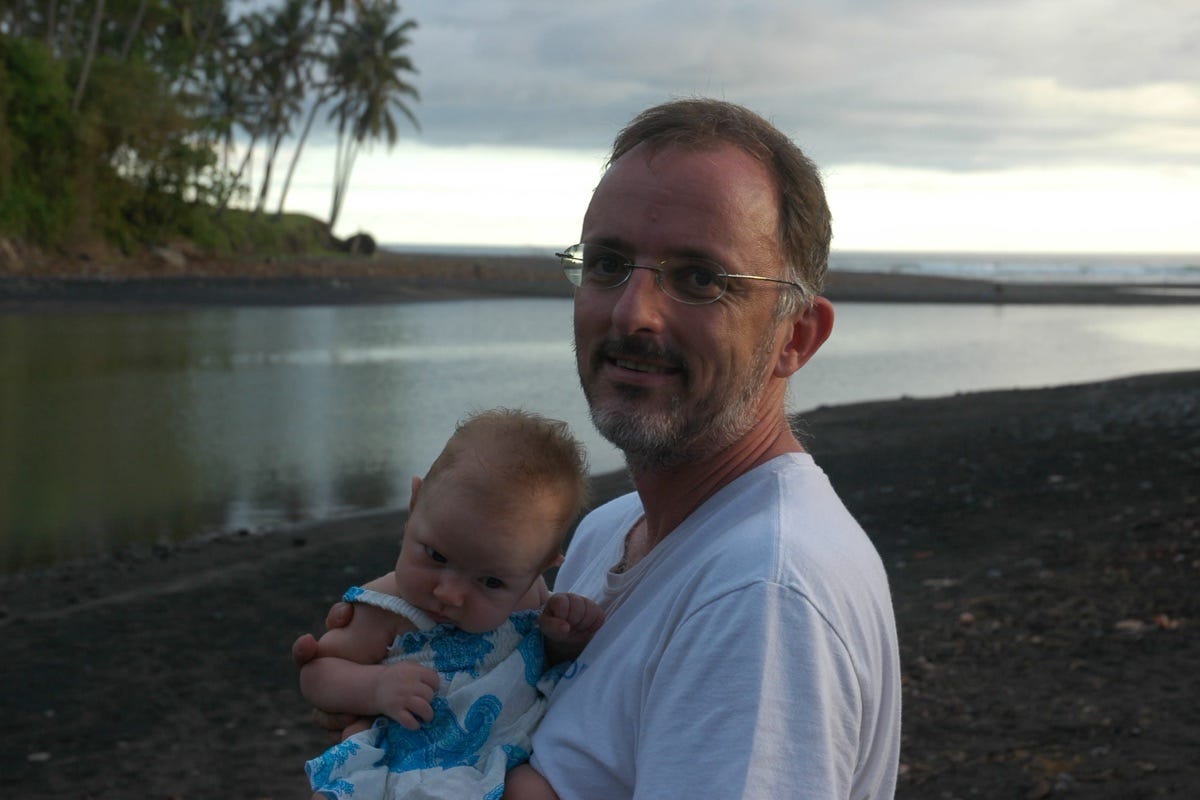
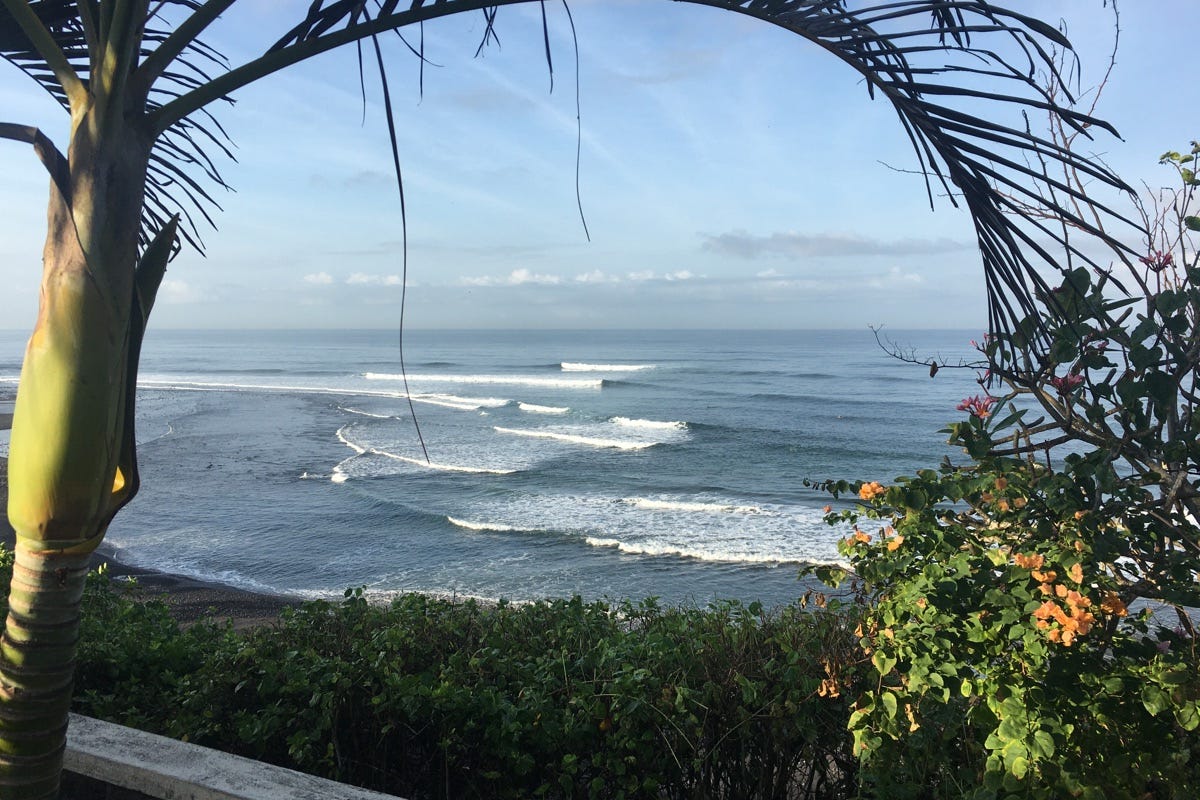
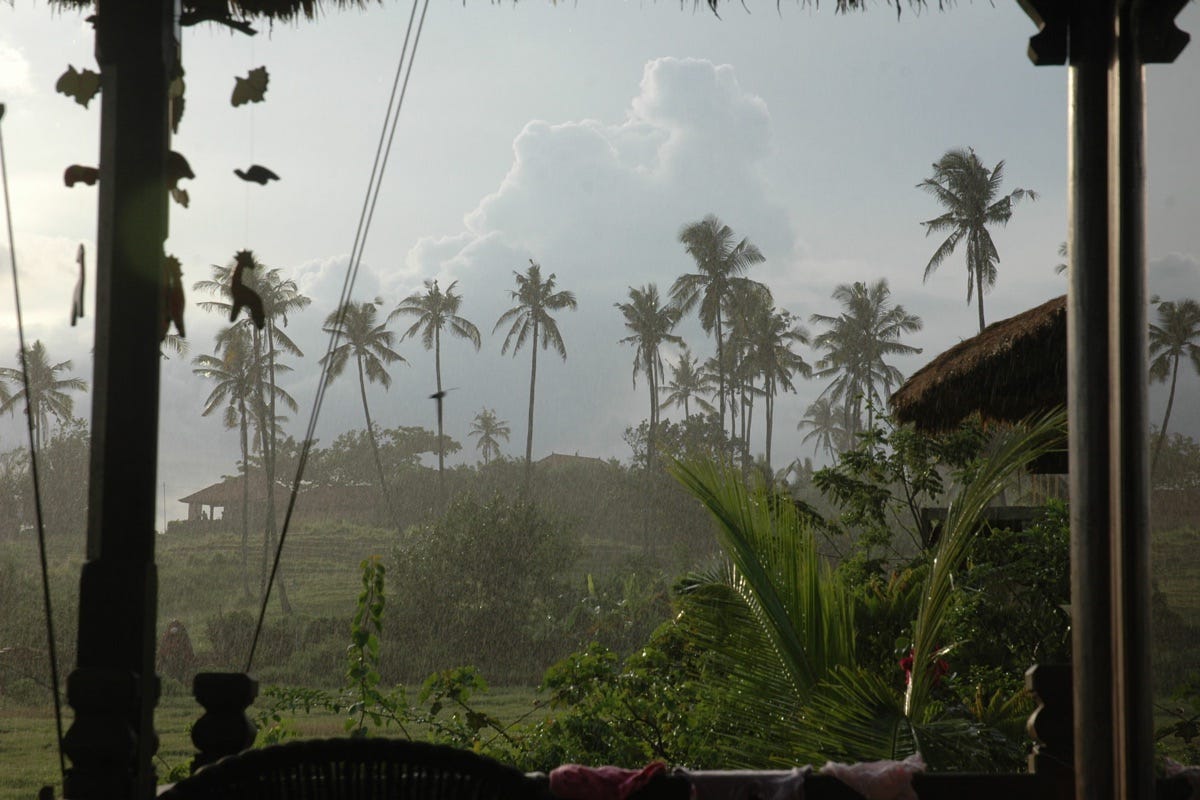
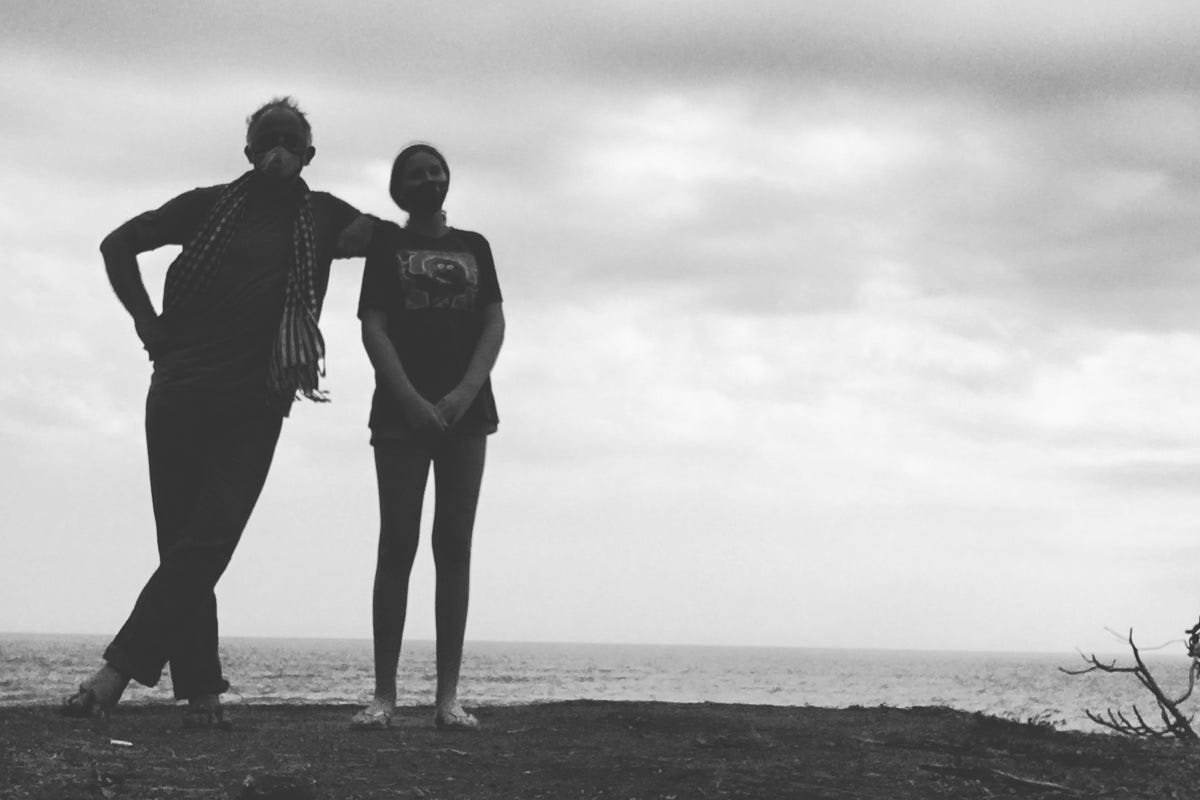
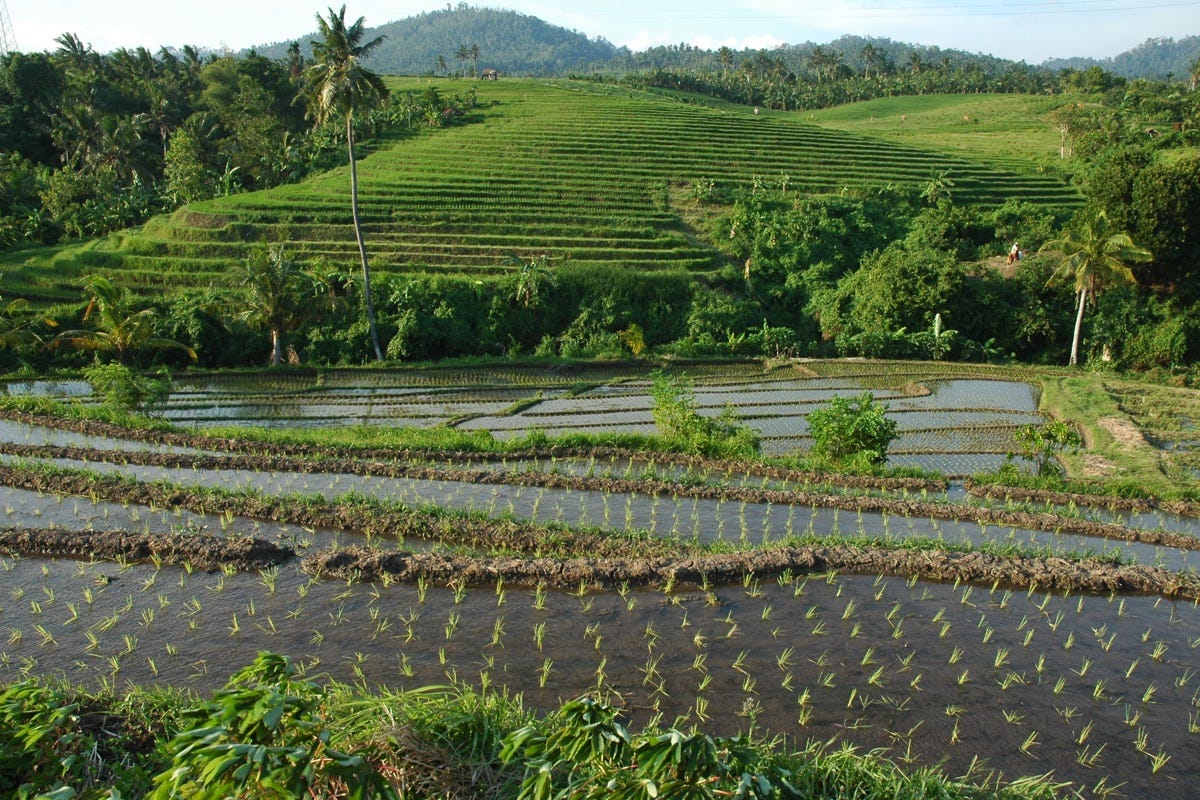
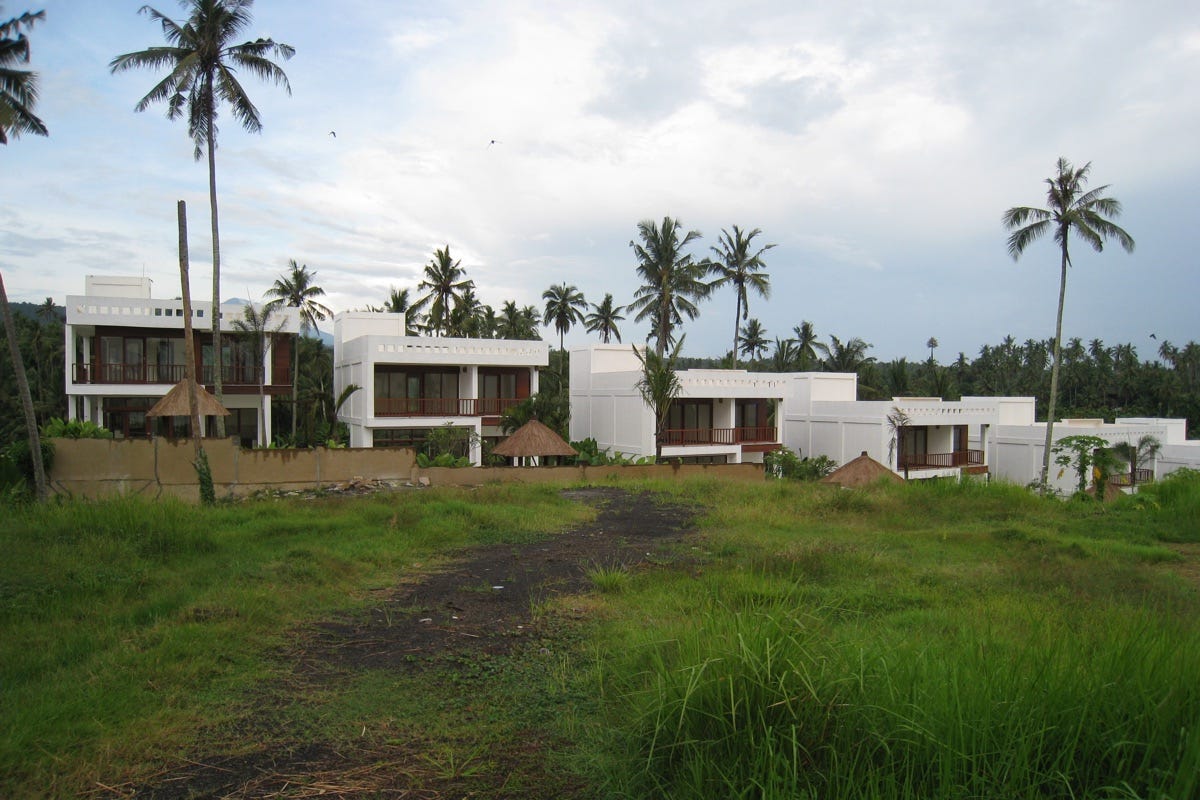
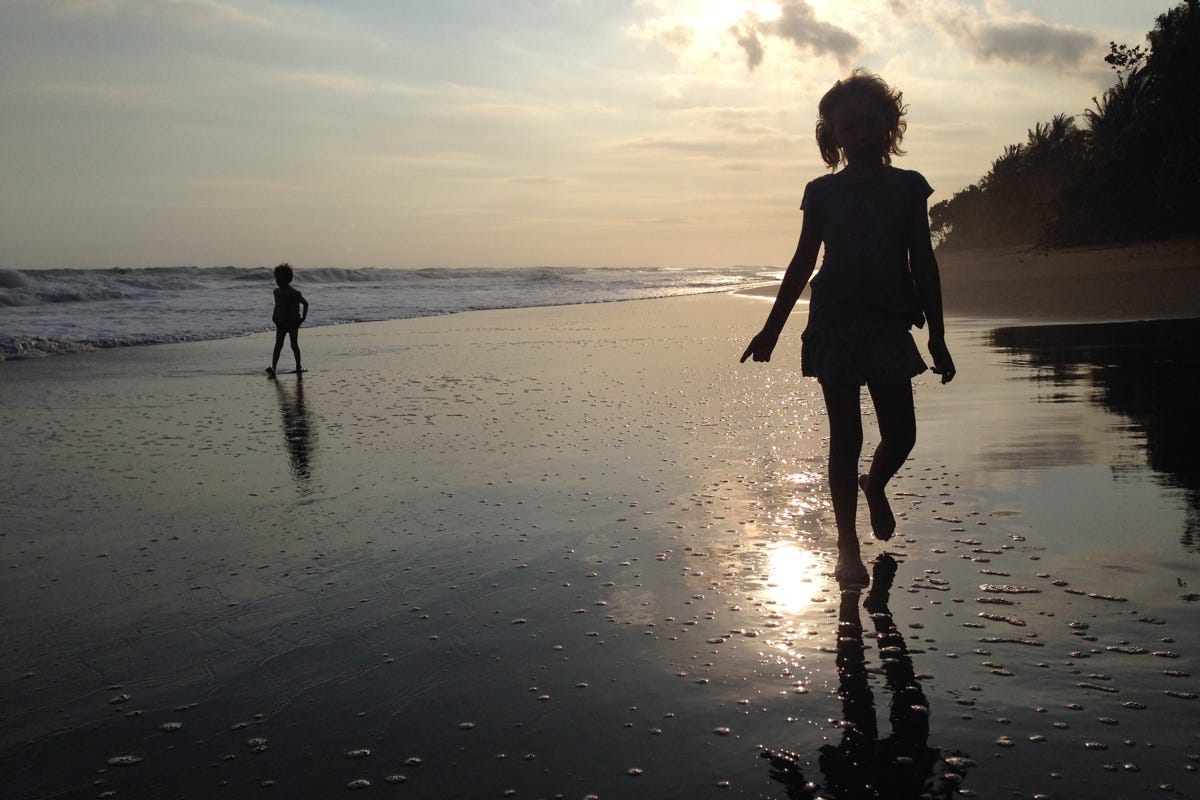









Share this post